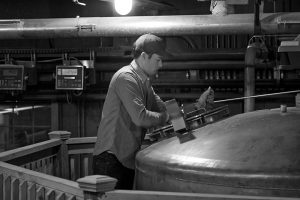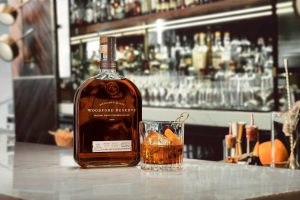When asking the question ‘What is the difference between whisky and bourbon’, we need to consider that all bourbon is whisky but not all whisky is bourbon. This may sound confusing but it is defining the fact that bourbon is a type of whisky rather than a separate spirit altogether.

To begin with we must understand the difference between whisky and whiskey. Whisky refers to Scottish, Canadian, or Japanese grain spirits whereas whiskey refers to grain spirits distilled in Ireland and the United States. Whisky is a general term for an alcoholic liquor made from fermented grain mash. The particular grain that is traditionally used will usually depend on what is available in the local area. For example,
Irish whisky is typically made from barley, while American whisky is usually made from corn or rye.
Disregarding bourbon, other whiskies can be aged in barrels previously used to age other spirits, and they don’t necessarily need to be whisky barrels — Port, Sherry, and Rum casks are used in the ageing process for non-bourbon whisky. Whilst bourbon has very distinct criteria that it must meet to be classed as bourbon. All bourbon must be distilled and aged in the United States and is predominantly associated with Kentucky and the South, where 95% of the world’s bourbon is distilled, but it can be manufactured anywhere in the country. The theory behind the name ‘bourbon’ is that the whiskey is named after Bourbon County, Kentucky, which claims to be the place where this type of whiskey was first produced.

Bourbon whiskey was historically formed mainly in Bourbon County but is now made in distilleries across the state of Kentucky. Bourbon whiskey is primarily made and must consist of at least 51% corn to be called bourbon in the United States. The remainder of the blend can consist of other grains, traditionally rye or wheat and malted barley. Although bourbon has specific requirements considering barrels and distillation, the corn requirement is the main aspect that makes bourbon unique from other types of whiskey. The other factors to consider are the barrels that the bourbon is aged in and the ABV requirements.

Bourbon must be aged in new charred oak barrels for at least 2 years and cannot include any colourings or additives – this is required by law in the United States. Over the years, several reasons have led to this practice but it is speculated to be mainly down to the history of bourbon manufacturing and that when matured in new barrels, bourbon interacts with the highest concentrations of the elements that provide its mouthfeel and distinct oak, vanilla, and caramel notes. While American bourbon distillers can’t reuse the barrels, other spirit makers aren’t limited by the same restrictions. Used bourbon barrels make the perfect vessels for distilling other beverages and can add unique flavour to scotch, rum and even tequila.
Bourbon must also hit a certain proof or alcohol content in the spirit. The mash must be distilled at 80% alcohol by volume or less, and aged in barrels until it is no more than 62.5% alcohol by volume or less. Before bottling, bourbon is filtered and diluted down to no less than 40% alcohol by volume. These strict regulations show that the margin for manufacturing bourbon is very fine and must be monitored closely. If this is not followed, it becomes a neutral grain spirit; as it retains less flavour. When distilled with a higher proof. Some types of whisky allow up to 95% ABV, but not bourbon.

Who knew there were so many minor but important details that separate bourbon from the rest of the whisky family!
For more check out, “What is Bourbon?”
Author: Shanel is a passionate writer who deeply loves the world of whisky. With an expert palate and a keen understanding of the nuances of this fine beverage, Shanel shares her knowledge and experiences through engaging and informative articles. Her favourite whisky is the Laphroaig 10-Year-Old.